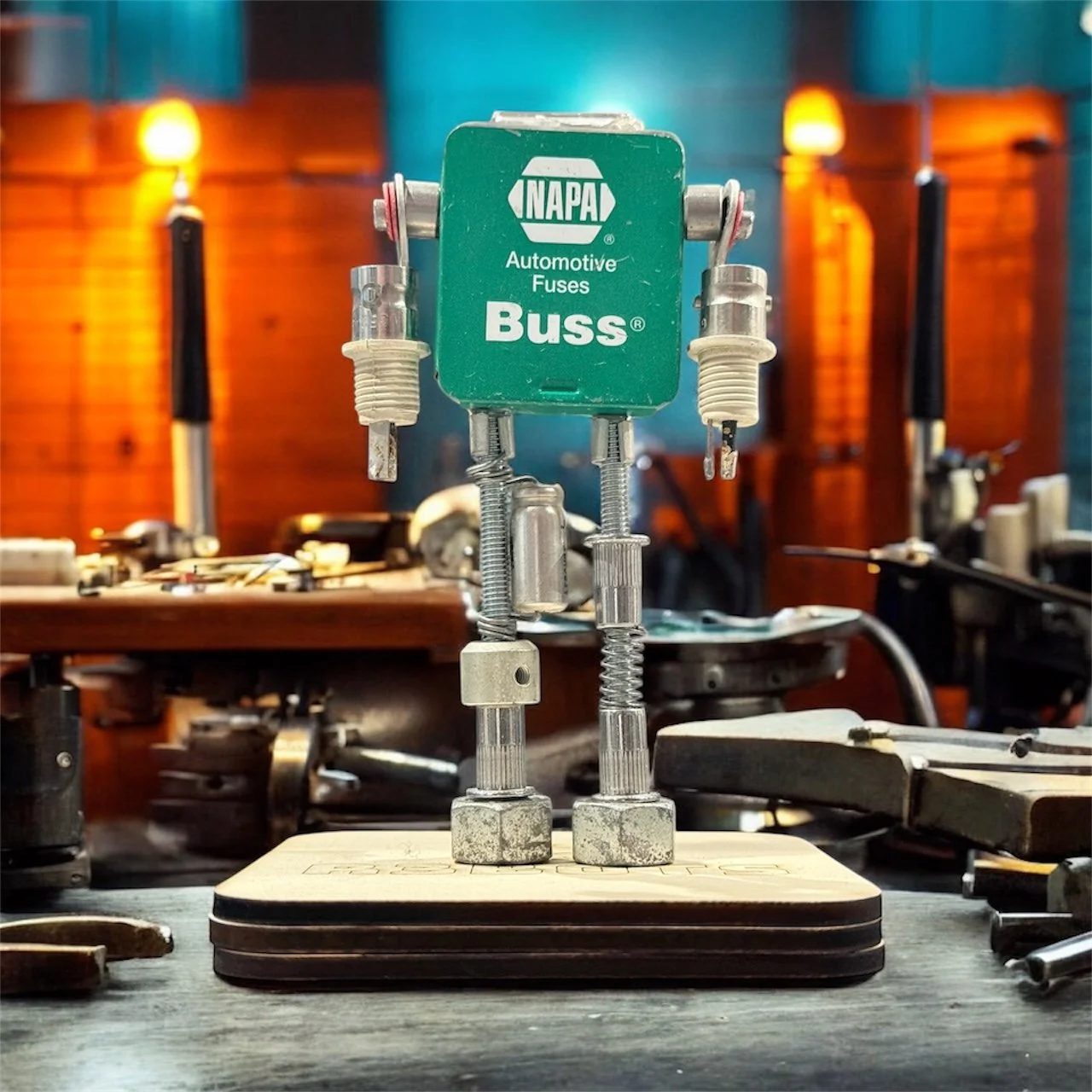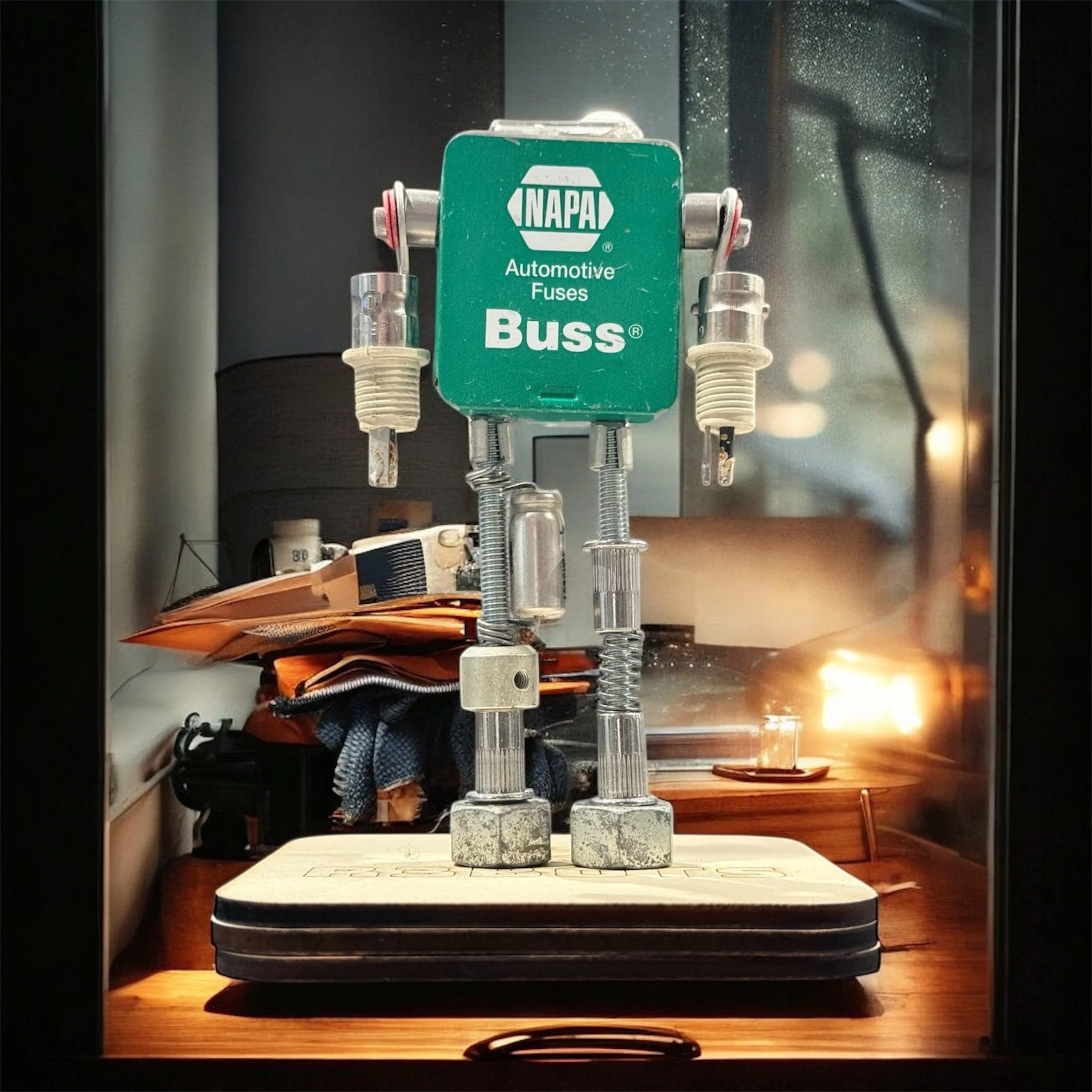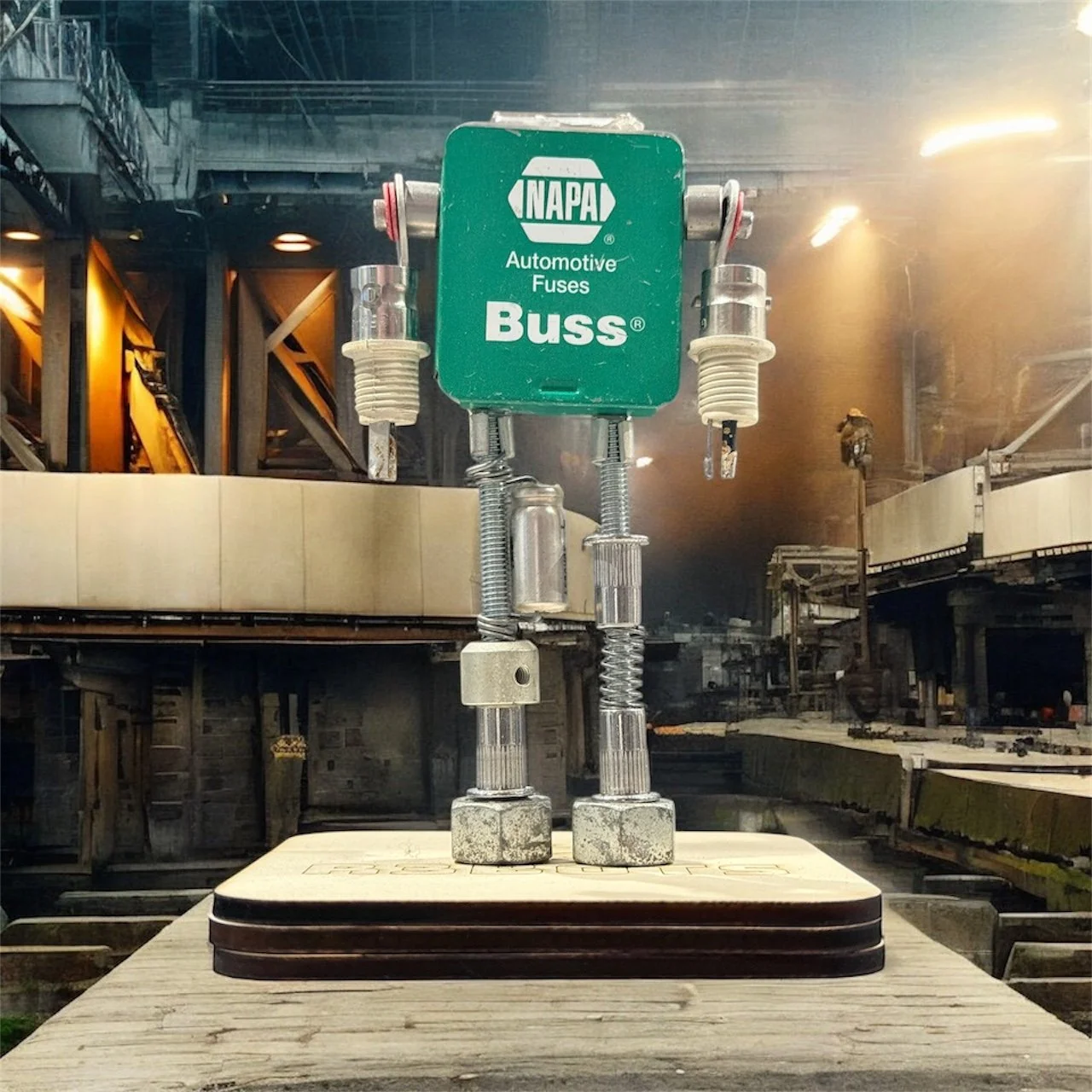 Image 1 of 4
Image 1 of 4

 Image 2 of 4
Image 2 of 4

 Image 3 of 4
Image 3 of 4

 Image 4 of 4
Image 4 of 4





NF-4
FIELD OPS DOSSIER: UNIT NF-4 “THE GREENLINE GUARD”
Division: Automotive Systems / Roadside Recovery
Height: 4.5 in
Status: Active
Serial: NF-4
Origin Classification: Vehicle Electrical Preservation / Phase I
I. Origins: The Roadside Rescue Era
NF-4’s core began life as a compact NAPA Buss Automotive Fuse kit, issued to fleet mechanics and long-haul truck operators throughout the 1970s and 80s. These little green tins were designed to save a trip — a way to get a stalled vehicle, blown fuse block, or darkened emergency rig safely back on the road without waiting for a shop.
This tin, however, had a different history.
It belonged to a veteran roadside technician known only on paperwork as “G. Linder — Unit 27.”
Linder’s kit was legendary among truckers.
He helped stranded drivers in rainstorms, snow, and summer heat, often diagnosing faults by instinct alone. His green Buss tin was the one tool he never replaced — dented, scratched, always in his pocket.
After Linder’s retirement, the tin—and the tools within—were boxed in a service department purge and forgotten for over thirty years.
II. Rediscovery: The Green Box That Wouldn’t Die
During a municipal storage cleanup, Field Ops scavengers uncovered the forgotten mechanic’s cache. Among the rusted wrenches and brittle wiring loomed the unmistakable green Buss tin.
When they opened it, the team found:
Three vintage fuse taps
Two crimp connectors
A cracked porcelain fuse base
A faded inspection slip with the hand-written initials “NF-4”
Despite decades of neglect, the tin showed almost no corrosion — uncommon for its age. Its interior still carried the scent of electrical cleaner and road dust.
R3BOTS engineers saw potential in its longevity.
III. Reconstruction: Built for the Field
The lab crafted NF-4’s body around the tin’s durability and purpose:
Dual insulated connector arms to mimic roadside test tools
Spring-steel stabilizer legs for balance on uneven terrain
Hex-foot mounts for grip on wet pavement
A central fuse-socket core repurposed from the original kit
A top-mounted signal pin, acting as its alert antenna
When power was routed through the fuse core, NF-4 activated instantly — reflexive, alert, and jitter-free.
Its first digital output read: “Circuit available. Ready for field duty.”
IV. Deployment: The Greenline Guard
NF-4 quickly earned its operational nickname: “The Greenline Guard.”
This compact unit specializes in:
Identifying vehicle electrical faults
Jump-routing temporary power
Fuse diagnostics
Stabilizing battery surges
Assisting larger Field Ops units in mobile repair missions
NF-4 is known to sprint toward malfunctioning rigs long before larger bots detect the failure.
Though quiet, it works nonstop — just like the mechanic who carried its core tin decades ago.
V. Creed
Etched underneath its hex-foot: “Keep them moving.”
R3BOTS FIELD OPS MOTTO
REPURPOSE. REBUILD. REINVENT.
FIELD OPS DOSSIER: UNIT NF-4 “THE GREENLINE GUARD”
Division: Automotive Systems / Roadside Recovery
Height: 4.5 in
Status: Active
Serial: NF-4
Origin Classification: Vehicle Electrical Preservation / Phase I
I. Origins: The Roadside Rescue Era
NF-4’s core began life as a compact NAPA Buss Automotive Fuse kit, issued to fleet mechanics and long-haul truck operators throughout the 1970s and 80s. These little green tins were designed to save a trip — a way to get a stalled vehicle, blown fuse block, or darkened emergency rig safely back on the road without waiting for a shop.
This tin, however, had a different history.
It belonged to a veteran roadside technician known only on paperwork as “G. Linder — Unit 27.”
Linder’s kit was legendary among truckers.
He helped stranded drivers in rainstorms, snow, and summer heat, often diagnosing faults by instinct alone. His green Buss tin was the one tool he never replaced — dented, scratched, always in his pocket.
After Linder’s retirement, the tin—and the tools within—were boxed in a service department purge and forgotten for over thirty years.
II. Rediscovery: The Green Box That Wouldn’t Die
During a municipal storage cleanup, Field Ops scavengers uncovered the forgotten mechanic’s cache. Among the rusted wrenches and brittle wiring loomed the unmistakable green Buss tin.
When they opened it, the team found:
Three vintage fuse taps
Two crimp connectors
A cracked porcelain fuse base
A faded inspection slip with the hand-written initials “NF-4”
Despite decades of neglect, the tin showed almost no corrosion — uncommon for its age. Its interior still carried the scent of electrical cleaner and road dust.
R3BOTS engineers saw potential in its longevity.
III. Reconstruction: Built for the Field
The lab crafted NF-4’s body around the tin’s durability and purpose:
Dual insulated connector arms to mimic roadside test tools
Spring-steel stabilizer legs for balance on uneven terrain
Hex-foot mounts for grip on wet pavement
A central fuse-socket core repurposed from the original kit
A top-mounted signal pin, acting as its alert antenna
When power was routed through the fuse core, NF-4 activated instantly — reflexive, alert, and jitter-free.
Its first digital output read: “Circuit available. Ready for field duty.”
IV. Deployment: The Greenline Guard
NF-4 quickly earned its operational nickname: “The Greenline Guard.”
This compact unit specializes in:
Identifying vehicle electrical faults
Jump-routing temporary power
Fuse diagnostics
Stabilizing battery surges
Assisting larger Field Ops units in mobile repair missions
NF-4 is known to sprint toward malfunctioning rigs long before larger bots detect the failure.
Though quiet, it works nonstop — just like the mechanic who carried its core tin decades ago.
V. Creed
Etched underneath its hex-foot: “Keep them moving.”
R3BOTS FIELD OPS MOTTO
REPURPOSE. REBUILD. REINVENT.
